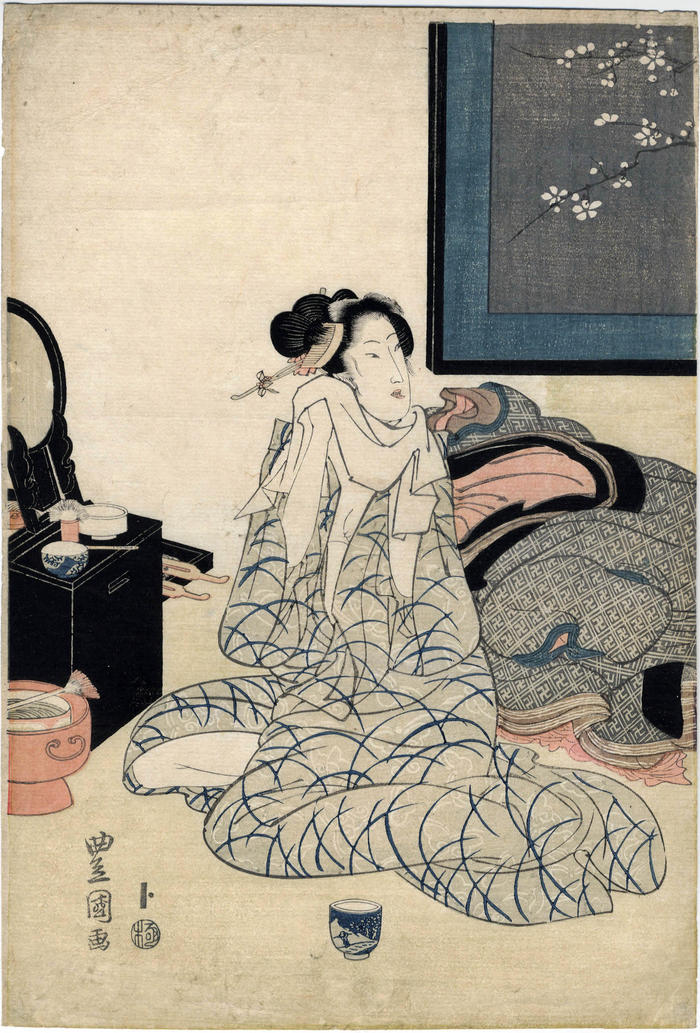Utagawa Toyokuni I (初代歌川豊国) (artist 1769 – 02/24/1825)
After the bath - left panel of a triptych
ca 1815
10.5 in x 15 in (Overall dimensions) Japanese color woodblock print
Signed: Toyokuni ga (豊国画)
Publisher: Yamaguchiya Tōbei
(Marks 591 - seal 15-005)
Censor's seal: kiwame
Ritsumeikan University - in black and white
Art Gallery of New South Wales
Ishikawa Prefectural Museum of Art
Musées Royaux d'Art et d'Histoire (via Ritsumeikan University)
Berkeley Art Museum and Pacific Film Archive at the University of California A bijin, kneeling before a lacquered mirror, dries herself after a bath. Originally this specific print was said to have a seal of the Blondeau collection on the mount, but that mount no longer exists. However, that is no reason to assume that this print was not part of that collection.
There is a catalogue of the sale of the prints owned by Paul Blondeau in the New York Public Library. The sale was conducted by Sotheby's in London on April 26, 1910. This is the same sale reference by Basil Stewart in 1920 in his Japanese Colour-prints and the Subjects They Illustrate: A Guide for the Collector & Student with Description of the Subjects Illustrated in Landscape, Drama, Story and Portraiture, page 62 in reference to a particularly rare Kiyomitsu triptych. This sale was also mentioned in volume 27 of The Connoisseur, a Hearst publication, in 1910.
However, what we do not know is whether or not this print in the Lyon Collection was part of that sale. Perhaps if we could look at the catalogue in the New York Public Library we might be able to tell for sure. Possibly not.
****
There is an Utamaro print very similar in feel to this one in that it shows a large head of a beauty right after her bath. On one example of that print is an oval seal printed in red immediately below the artist's signature. It reads: 'burando' which is the Japanese for Blondeau.
Also, there is a Hokusai print in the Portland Museum of Art with the same seal.
One thing that is not immediately obvious is the design of the woman's robe. To see it properly you will need to use the enlargement tool offered by this site. Click on the image and you will see that there are numerous butterflies flying among the long blades of grass. Our suspicion is that the main color of this robe has faded from a more pronounced color.
Also notice that the crumpled outer robe on the right side of the print is covered with a swastika or manji pattern, a positive sign used for eons in Asian art prior to its appropriation by the Nazis in the early 20th century.
The woman's black lacquer mirrored box on the left shows opened drawers with kanzashi or hairpins waiting to be arranged in her hair. There are also bowls and a brush used for cosmetics for 'making her face up' for the day. Ritsumeikan University refers to this image, parenthetically, kyōdai no mae(鏡台之前), 'before the mirror'.
beautiful women (bijin-ga - 美人画) (genre)
Yamaguchiya Tōbei (山口屋藤兵衛) (publisher)
